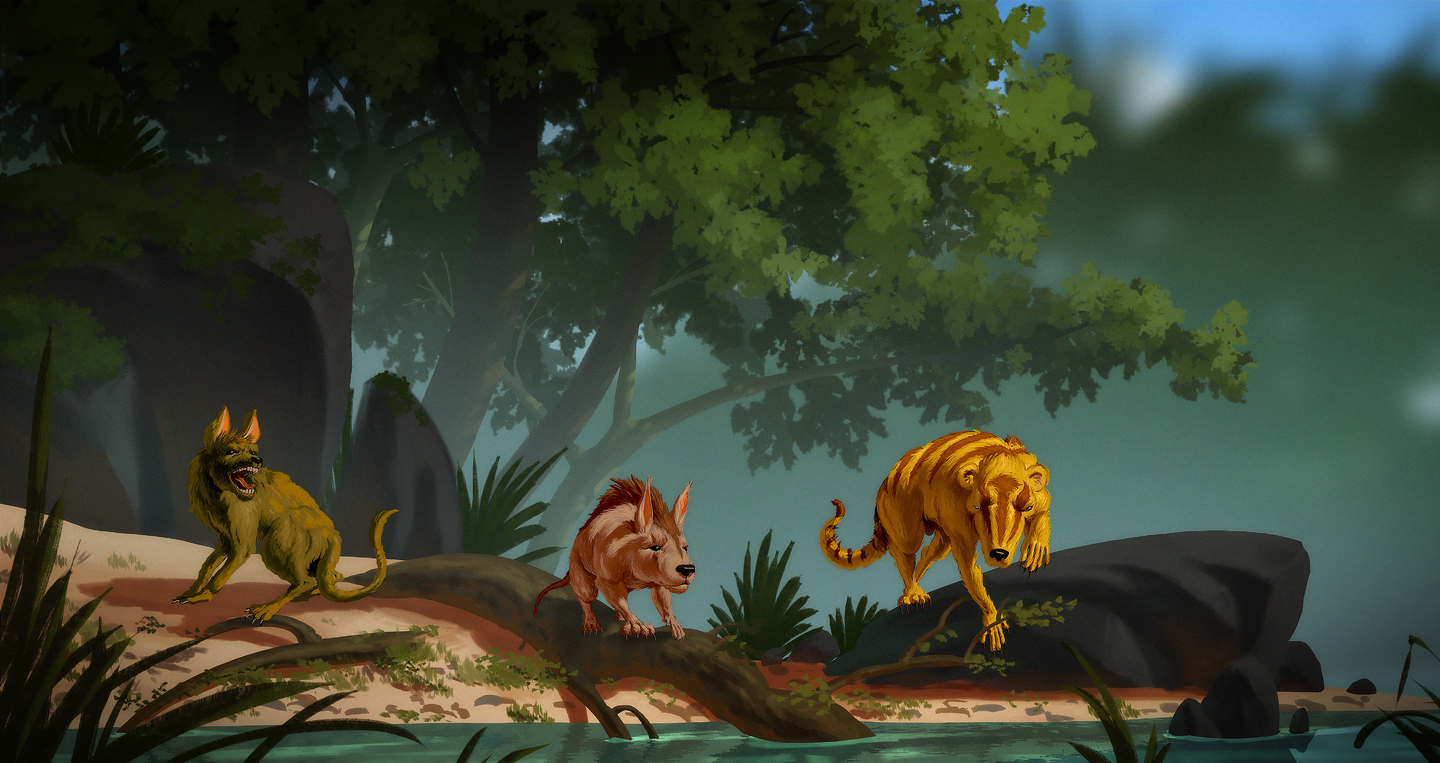Meet the cat-sized mammals that thrived after the dinosaurs died
Three newly discovered fossil mammals hint at a bustling post-dinosaur world.

Paleontologists have discovered three new early mammal species that dwelled in present-day Wyoming shortly after the dinosaurs went extinct, suggesting that this early chapter in the dawn of mammals was more diverse than previously recognized.
The researchers examined the fossilized teeth and jaws of the mammals, which were about the size of a giant rodent or small cat. They found that they belonged to a group called condylarths, or archaic ungulates, which includes the ancestors of today’s hooved animals. These specimens lived within the first 328,000 or so years after the dinosaurs disappeared, a time known as the early Puercan age.
Most sites in the western United States and Canada with fossils from this period contain largely the same few mammal species, says Jaelyn Eberle, a curator at the University of Colorado Museum of Natural History in Boulder. She and her colleague Madelaine Atteberry reported the new findings on August 18 in the Journal of Systematic Palaeontology.
“Here we have one [site] where there’s a bunch of new guys on the scene,” Eberle says. “The diversification of mammals occurred, or certainly started, sooner than what we would predict from looking at other areas.”
After a massive asteroid struck Mexico’s Yucatán Peninsula about 66 million years ago, many mammals went extinct along with the dinosaurs. Those that remained would generally have been the size of mice or rats. The most abundant group of mammals in North America during this time was the condylarths. Their fossilized teeth don’t appear to be specialized for dining on flesh or plants, and they may have been omnivores.
The condylarth teeth that Eberle and Atteberry examined had previously been collected from a sandstone river channel in a quarry in south-central Wyoming’s Great Divide Basin. Teeth are hard and plentiful, meaning they are preserved well as fossils, and their bumps and ridges can be used to identify both present-day and ancient mammals.
When the researchers examined the specimens’ teeth and jaws, they found distinctive features suggesting they were looking at three previously unrecognized species. To find out where these creatures fell in the ungulate family tree, the team compared the fossils to teeth from 25 other condylarths and another more distantly-related early mammal. They analyzed 64 characteristics of each specimen’s teeth and used a computer program to determine how closely related their mammalian owners were.
This analysis confirmed that the three new species fell within a family called the periptychids. This family had bulbous cheek teeth, in some cases with striated enamel that would have strengthened the tooth and perhaps enabled the animal to eat hard materials such as seeds.
[Related: This Australian behemoth is officially the largest dinosaur on the continent]
One of the new species was stuck out. Beornus honeyi would have been roughly the size of a housecat and had strikingly large striated cheek teeth. (Its name is a reference to Beorn, a character from J.R.R. Tolkien’s The Hobbit, and who is known for his massive size.)
“Periptychids all have these puffy teeth, but Beornus is above and beyond,” says Atteberry, a geologist and undergraduate program assistant at the University of Colorado Boulder. “They look like they were stung by little bees; they’re very swollen-looking.”
The other new species were likely between a rat and housecat in size. Miniconus jeanninae was distinguished by an unusual extra cusp on its molars. Conacodon hettingeri is set apart from its close relatives by several features, including a comparatively short lobe on its last molar.
While the three species boasted distinct dentition and probably had somewhat different diets, it’s not clear what they actually did eat from the shape of their teeth alone, Eberle says. Part of the reason for this is that condylarth teeth don’t generally resemble those of any living mammals. In the future, Eberle and her colleagues hope to build a better picture of what the mammals might have feasted on by looking at wear patterns on the teeth, such as little pits and scratches that would indicate that an animal had dined on seeds or other crunchy things.
The specimens Eberle and Atteberry investigated were housed in the University of Colorado Museum of Natural History, along with more than 400 others from the same site.
“I would predict that there’s a number of new species still yet [to be identified] in the collection that we need to get studying,” Eberle says. “This is just the beginning.”
The new findings highlight how quickly mammals began to bounce back after the cataclysmic asteroid strike, says Nick Longrich, a paleontologist at the University of Bath in England who was not involved with the research.
These early mammals would have faced little competition and evolved to fill ecological roles vacated by the dinosaurs. “You’re seeing this incredible burst of creativity of the mammals, kind of in response to this disaster,” Longrich says. “It doesn’t surprise me at all that there’s much more happening much faster than we thought.”
The discovery of three new species not seen anywhere else also demonstrates how different locations might have developed unique pockets of diversity.
“It’s not a monotonous wasteland but a sort of diverse set of post-apocalyptic landscapes,” Longrich noted in an email. “Imagine if, for example after the world ends, it’s a zombie apocalypse in one area, Mad Max bikers in another region, cannibal cult in another, and so on.”
